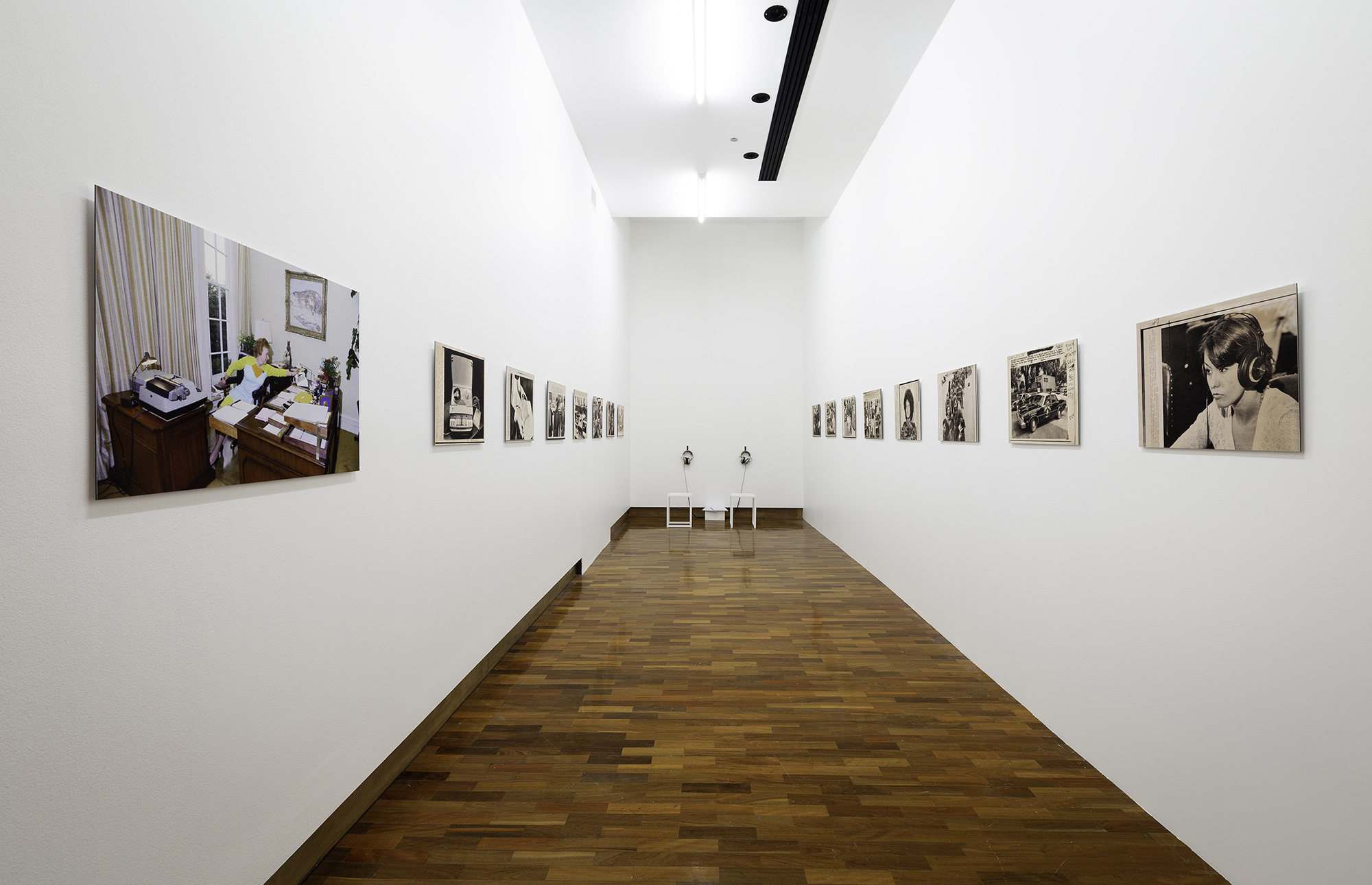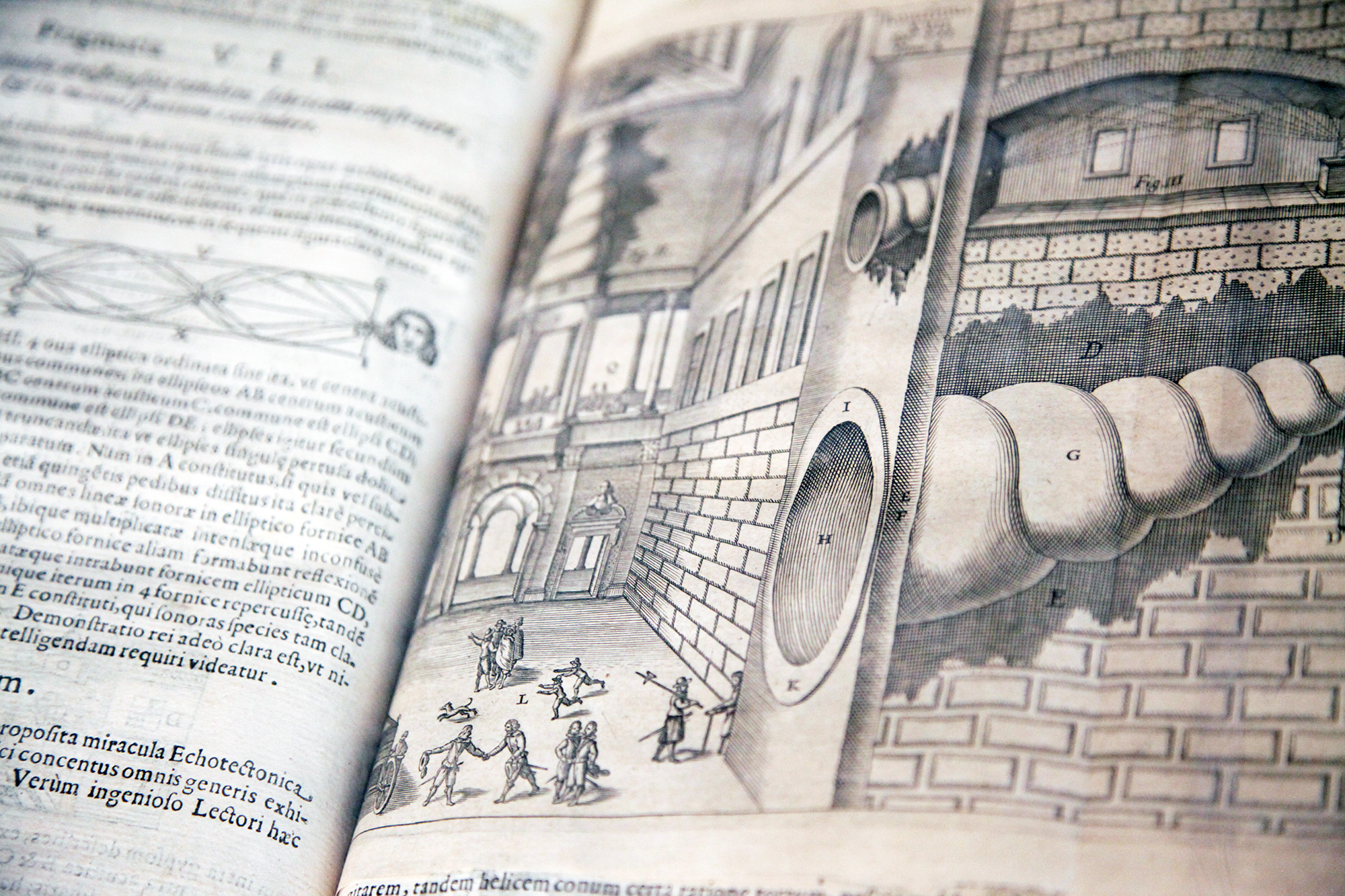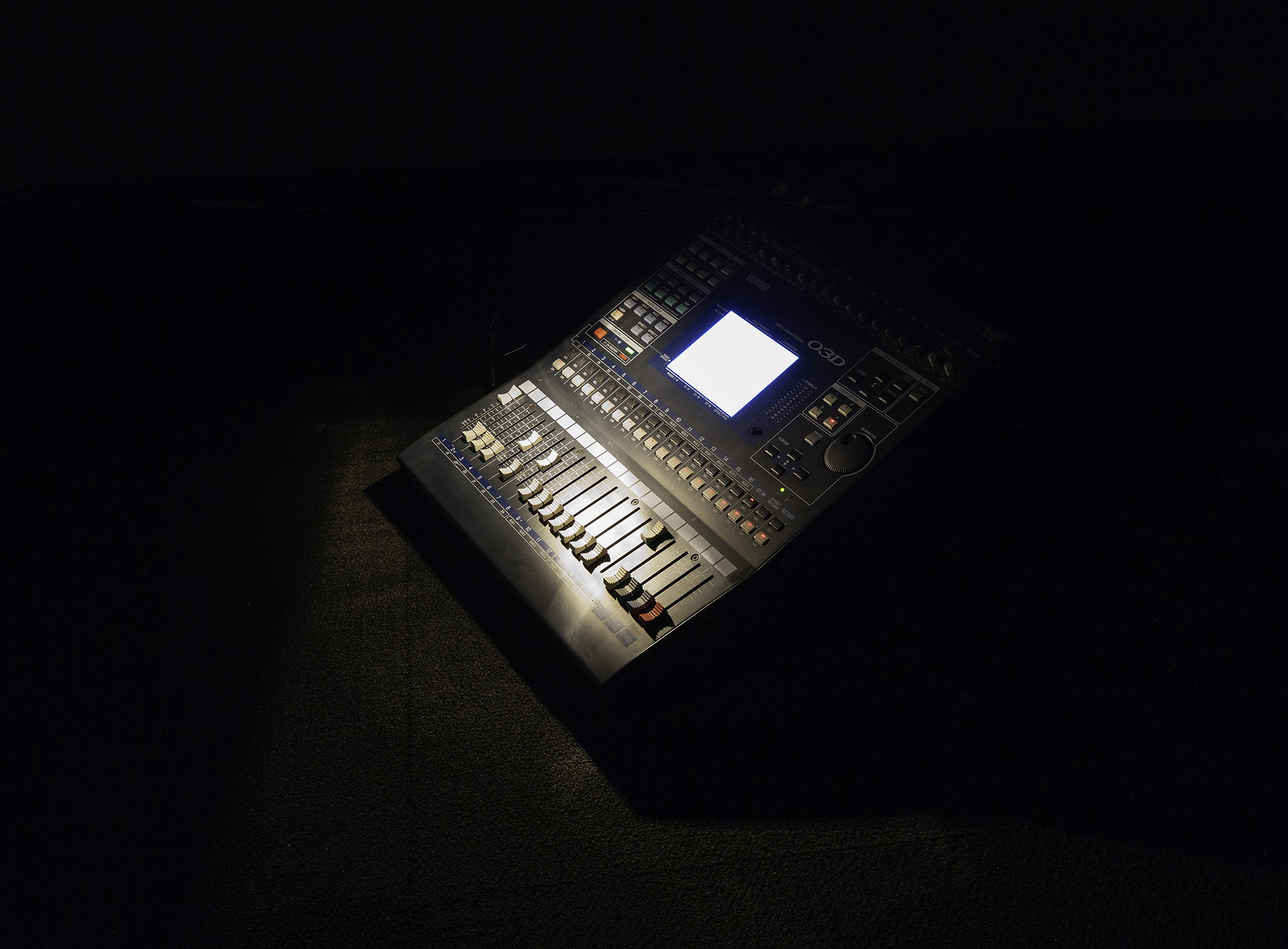Shows
“Eavesdropping” at the Ian Potter Museum of Art


In Athanasius Kircher’s seminal book of musicology, Musurgia Universalis (1650) he illustrates an “echotectonic” apparatus that would make public conversations audible to the Royal Court, depicting giant cochlea-like horns which penetrate the walls of a piazza and spiral up to discrete listening devices in private chambers. A print of this instrument opened the exhibition portion of the multi-event “Eavesdropping,” encapsulating the project’s examination of the ever-increasing access to, capture and control of our sonic worlds by state and corporate interests, and the technics, legalities and politics of what it might mean for someone or something to be listened to.


The “panacoustic” possibilities of Kircher’s apparatus provided impetus for later models of architecturally enabled surveillance, such as English philosopher and social theorist Jeremy Bentham’s panopticon penitentiary, and are put to use today at Saydnaya Military Prison in Syria, which is solely dedicated to detaining political prisoners.The latter was the focus of one of 13 text- and sound-based installations in “Eavesdropping”: Lawrence Abu Hamdan’s Saydnaya (The Missing 19dB) (2017), produced in collaboration with Amnesty International and the Turner Prize-nominated research agency Forensic Architecture. In a darkened room at the Ian Potter Museum of Art, a speaker played a verbal testimony from one of the few survivors of Saydnaya, where prisoners are held in total darkness and silence as a form of torture and control. The work takes its title from the 19 decibel drop in sound levels that prisoners have deemed safe to use. To convey just how quiet the prison is, the artist also placed an automated Yamaha mixing desk on the floor. Controlled as if by a ghost, the knobs inch lower and lower as the sound level in the work drops to a whisper.

The exhibition space itself was never quiet, however. The curators, Joel Stern and James Parker, permitted plenty of sound “mixing” in “Eavesdropping,” managed through elegant exhibition design. In the main gallery, four artworks were alternately activated through the various speakers and projectors, with one starting as the other ended. It was thus necessary to re-orient oneself in the space to locate the new sound sources and tune into a new narrative. Within this context, Joel Sherwood-Spring’s Hearing Loss (2018), a video and sound installation, was arresting. The work placed the viewer between two projections, on opposing walls, depicting the eardrums of Sherwood-Spring and his mother Juanita Sherwood, an activist and Indigenous health worker. Through the speakers, visitors listened to a recorded conversation between the two as they discuss otitus media, an inflammatory ear disease that is common in Indigenous Australian children and can ultimately cause profound hearing loss. Caught between the two images and voices, we become conscious of the literal and metaphorical loss of agency for these individuals and communities.

In the same gallery was How Are You Today (2018), another work that opens up a channel of communication, this time with the asylum seekers detained by the Australian government on Manus Island, Papua New Guinea. The sound installation was produced by the Manus Recording Project Collective, a collaboration between asylum seekers Farhad Bandesh, Behrouz Boochani, Samad Abdul, Shamindan Kanapathi, Kazem Kazemi and Abdul Aziz Muhamat, with Melbourne-based artists Michael Green, André Dao and Jon Tjhia. Each day for the duration of the exhibition, the men on Manus were asked to make a ten-minute sound recording of a moment in their daily lives and send it to Melbourne, where it was uploaded to the work. The result is a series of sonic snapshots of six men trying to make the best of their situations while they remain in limbo—we hear them playing music, cooking dinner, donating blood, spending time with friends, and making plans for the future—and places the imperative on us to take the time to listen to these voices and lives which have been cast out of sight.
The exhibition portion of “Eavesdropping” is on view at Ian Potter Museum of Art, Melbourne until 28 October, 2018.







